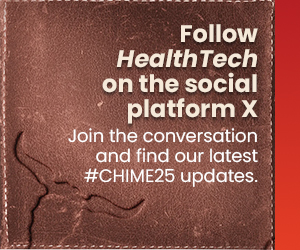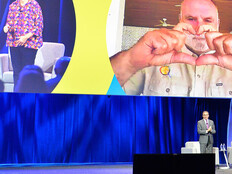The Importance of Change Management for Healthcare IT Adoption
Rasu Shrestha, executive vice president and chief innovation and commercialization officer at Advocate Health, said he believes the role of leadership isn’t to provide certainty, because if that’s the goal then healthcare leaders will always be doomed to fail. Instead, he said, it’s about providing clarity amid uncertainty.
He told the story of how Advocate Health turned the pandemic crisis into an opportunity. The organization underwent a transformation, growing from a $6 billion to a $36 billion health system.
“We were focused on clarity and vision — not growth for growth’s sake but growth for scale, and scale for influence,” he said.
Ryan Simpson, CEO of Methodist Hospital and Methodist Children’s Hospital, a health system based in San Antonio, explained that leaders should make people comfortable with change and with being uncomfortable. When thinking about change, thinking about the future is important, but there’s also wisdom in looking in the rearview mirror. Simpson recommended that leaders reflect with their teams about how they faced a challenge and overcame it.
How to Design a Resilient Health System
Couts asked panelists how healthcare leaders can design a system and culture that can withstand shocks, cyberattacks and financial pressures.
Simpson replied that it has everything to do with culture.
“My role is about two things: strategy and culture. However, culture eats strategy for breakfast, lunch and dinner,” he said. “It means that you have to understand where the organization is, assess its health and know the strengths and weaknesses of its culture to determine resiliency in the face of a challenge. Culture is everything and something that executives have to think about.”
Carol Burrell, executive adviser for Northeast Georgia Health System, explained that culture is about mission and values, which act as the organization’s foundation amid crisis and chaos. However, she said, it takes a lot of intentionality to understand what those values are.
“When we go through challenges, it always comes back to the ‘why.’ Why are we here? It’s bigger than us. It’s about community and health,” she said. “You have to understand your values and competencies. We’re not perfect, but knowing what we strive to be has solidified us and our values.”
EXPLORE: How does a strong strategic mission help healthcare organizations innovate?
Tips for Digital Health Implementation Success
“A number of digital tools can help improve patient care, but if you don’t operationalize them, it doesn’t do any good,” said Burrell.
Simpson added that Methodist Hospital has a patient and family advisory council, where the hospital invites patients to the table to share their good and bad experiences to help design care.
Advocate Health implemented a hospital-at-home program during the pandemic. When approaching the project, Simpson said, leadership had to rethink how it operates as a health system.
“It’s not just brick and mortar anymore, it’s clicks and mortar,” he said, adding that the organization is changing the paradigm from patient-centered care to person-centered care, broadening the approach. “How do we tap into the digital exhaust and nudge behaviors in the right way?”
Shrestha emphasized the need to incentivize wellness as a business imperative.
Another important piece of advice to keep in mind, Burrell said, is that healthcare IT leaders always need to check in to see how the technology is or isn’t being used. Things don’t always stay the same, and needs may change.
Preparing end users for technology is also crucial for implementation success, Simpson said. While leadership may have a vision and be excited, if leaders haven’t engaged with the end users, then they may not be ready for the change, and the implementation could fail.
“We had the right strategy, but the culture wasn’t ready,” he said.














